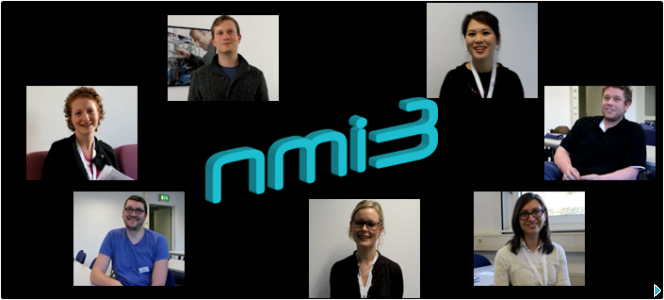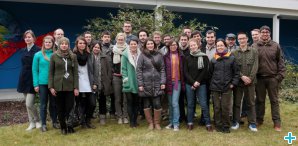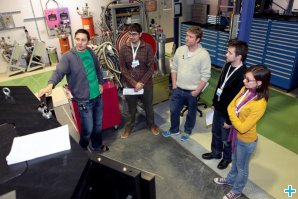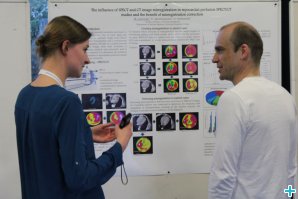The 2014 Berlin School– conversations with participants
The 34th Berlin School on Neutron Scattering
02/04/2014
The Berlin School on Neutron Scattering is one of the longest running schools. In its 34th edition around 30 students have met at the Helmholtz-Zentrum Berlin (HZB) between March 13 and 21 to learn about neutron scattering. Thanks to NMI3, the European participants had their expenses covered to attend the school.
We talked with Bella Lake, a neutron scattering scientist at HZB, to learn all about the Berlin Neutron School. The school has existed since the 80’s when the institute was still called the Hahn-Meitner Institute. In 2007 the school needed a new organiser and Bella took it over. She organised it together with Alan Tennant until last year when he left HZB.
The school programme
Initially the school lasted 5 days but Bella and Alan decided to extend it to 8 days with more lectures and also one more practical so that participants could go back to their home institutes with a solid background on neutron scattering.
The current school programme includes two and a half days of lectures to provide an introduction to neutron scattering and range of available techniques and instruments that the students come across during the practicals. There is also a special day of lectures on Saturday where students learn about the future European Spallation Source, the use of neutrons to explore cultural heritage, and how X-rays can be used to complement neutron measurements. They then performed the practicals on a range of different neutron instruments to develop an understanding how neutron experiments are performed and what they can achieve. The last day consisted of lectures focused on applications of neutrons in disciplines as biology, geosciences, energy, and on how to submit a proposal to a neutron facility, including the possibilities provided through NMI3!
During the practical sessions the scientists at HZB guide the participants to the instrument halls where they show them an instrument, explain how it works, how neutrons are used, and show the data obtained from a neutron scattering experiment and how to analyse it. During these sessions the participants are divided into groups according to their scientific background so that they can better understand the relevance of neutron scattering to their own research work. By the end of the school, everyone had access to seven different instruments.
This year for the first time the participants presented their work to their schoolmates and lecturers over a poster session. This encouraged students to better reflect and understand how to apply neutron scattering to their own research. Lively discussions took place for an hour and a half when everyone could learn what the others were doing and receive valuable suggestions from the lecturers.
There was also enough time to have fun! Over the 8 days most participants stayed at the HZB’s Guest House where they had plenty of time to get to know each other better and learn about their colleagues work. In addition the school organised social activities such as a welcome reception and dinner.
The participants’ background
The majority of the school participants are normally PhD students from diverse scientific fields who will need to use neutrons to answer some of their research questions. Due to the high number of applicants, unfortunately only 1/3 receive a place at the school. The selected participants are the ones who are successful in explaining what they want to learn in the school and why they need to use neutrons in their work. To learn more about their experience at the Berlin Neutron School, please watch the video.
According to Bella Lake, NMI3 plays a crucial role in promoting the school and financially supporting the European participants, who have their expenses covered by the project.
Useful links

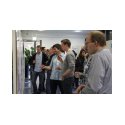
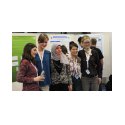
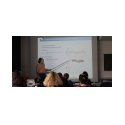
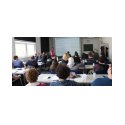
Related Articles
NaMES: Neutron and Muon European Schools: New name and logo
The Neutron and Muon European Schools – the NMI3 initiative on Education – has a new name and a logo. To know all about this NMI3 initiative please click here .
